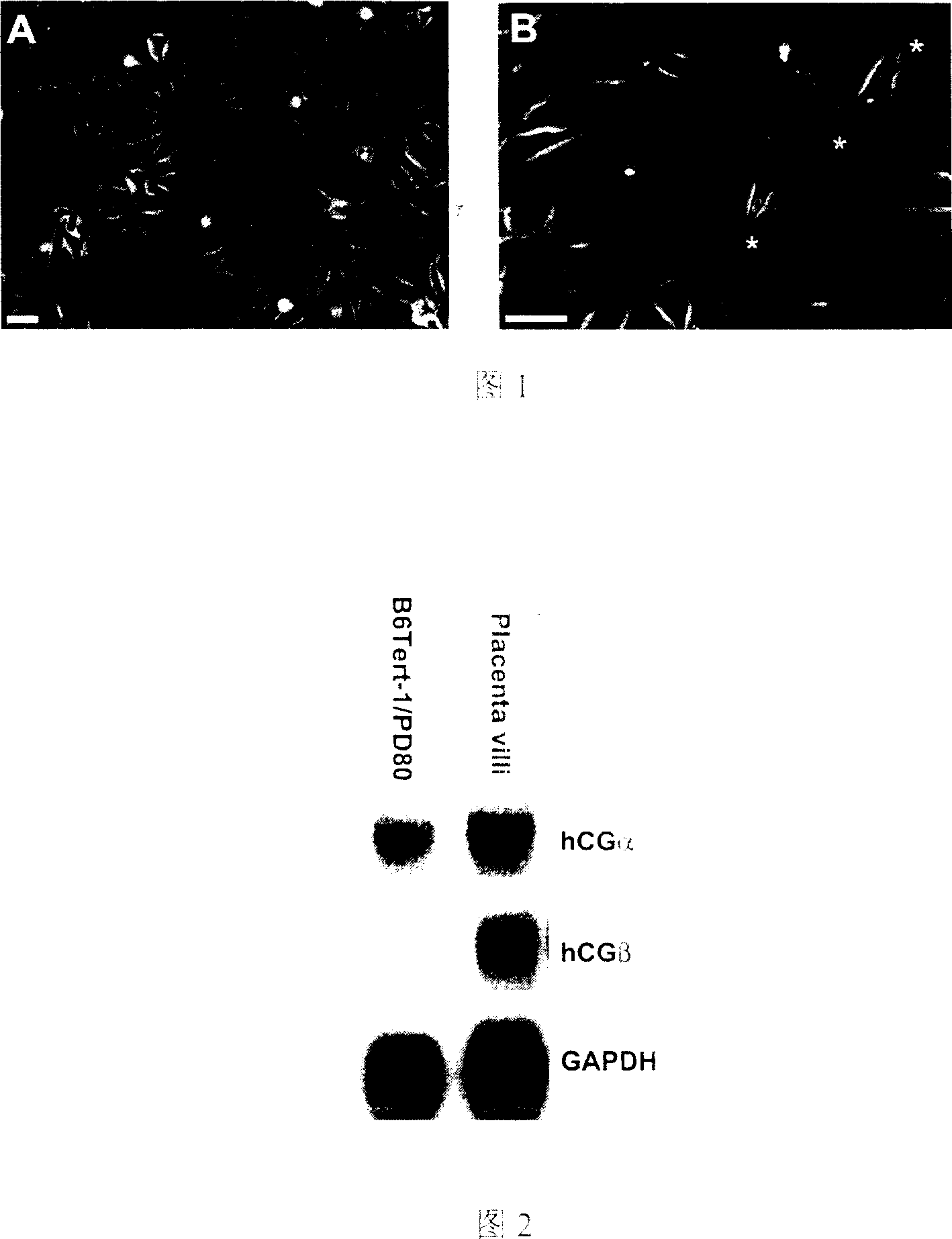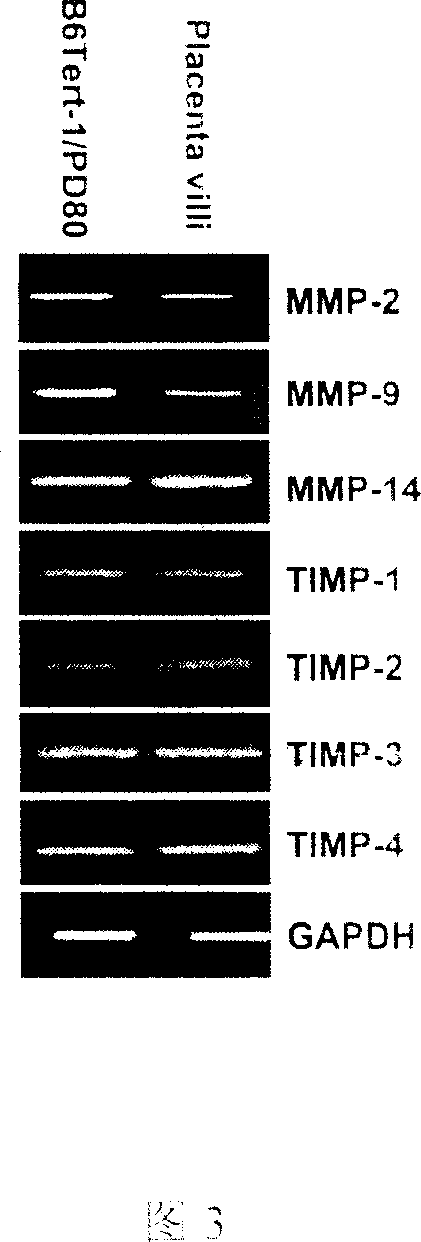Human placental nutritive layer cell line and its use
A technology of trophoblast cells and human placenta, applied in the field of cell lines, can solve the problems of large individual differences and conflicting results
- Summary
- Abstract
- Description
- Claims
- Application Information
AI Technical Summary
Problems solved by technology
Method used
Image
Examples
Embodiment 1
[0015] Example 1. Establishment of B6Tert-1 cell line
[0016] First, cytotrophoblast cells are isolated from the placenta of induced abortion at the age of 6-7 weeks of gestation (it can also be called villi at this time). Obtain 3-5 sterile villous tissues from the family planning clinic and bring them back to the laboratory in an ice bath; the following operations are all performed on a sterile operating table. Place the tissue in PBS buffer pre-cooled to 4°C to wash away the contaminated blood clots; transfer the tissue to fresh PBS buffer, separate the villi and basement membrane under a dissecting microscope and discard the basement membrane; collect the villi and Shred into 2-3mm 3 Transfer the small piece into a 50ml centrifuge tube, add 20ml of PBS buffer containing 0.2-0.3% trypsin (Sigma, USA), mix well and digest at 4-9°C for 30-50min; centrifuge (1000rpm, 5min) Discard the above solution, add 20ml of fresh FD culture medium and DNase (GIBCO, USA) at a final conc...
Embodiment 2
[0030] Example 2. Analysis of cell proliferation characteristics
[0031] 1) Cell proliferation rate
[0032] B6Tert-1(80PDs) cells according to 10 4 Cells / dish were inoculated in 35mm culture dishes coated with Cellmatrix, and three dishes were randomly selected every day from the 1st to 11th days for cell counting, and the cell proliferation curve was drawn accordingly. The results showed that the cell doubling time of B6Tert-1 was 36 hours; the cells reached confluency (i.e., the cells were in close contact with no extra gaps in the culture dish) on day 9, at which point the cell proliferation slowed down and eventually stopped proliferating. This phenomenon, known as "contact inhibition" of cell growth, is one of the proliferative properties of normal cells.
[0033] 2) Regulation of cell proliferation by epidermal growth factor (EGF) and transforming growth factor (TGF) β:
[0034] B6Tert-1 cells were divided into 5×10 5 Cells / dish were inoculated in 35mm culture di...
Embodiment 3
[0037] Example 3. Analysis of cell tumorigenicity (Tumorigenicity)
[0038] The B6Tert-1 cells grown to the 80 generation and the 210 generation were treated according to the 10 7 Cells / 100 μl were subcutaneously injected into nude mice respectively, and 3 nude mice were injected with each generation of cells. Tumor growth in nude mice was observed. After three months, no tumor formation was seen in the nude mice. It can be seen that B6Tert-1 cells are not tumorigenic.
PUM
 Login to View More
Login to View More Abstract
Description
Claims
Application Information
 Login to View More
Login to View More - R&D
- Intellectual Property
- Life Sciences
- Materials
- Tech Scout
- Unparalleled Data Quality
- Higher Quality Content
- 60% Fewer Hallucinations
Browse by: Latest US Patents, China's latest patents, Technical Efficacy Thesaurus, Application Domain, Technology Topic, Popular Technical Reports.
© 2025 PatSnap. All rights reserved.Legal|Privacy policy|Modern Slavery Act Transparency Statement|Sitemap|About US| Contact US: help@patsnap.com


